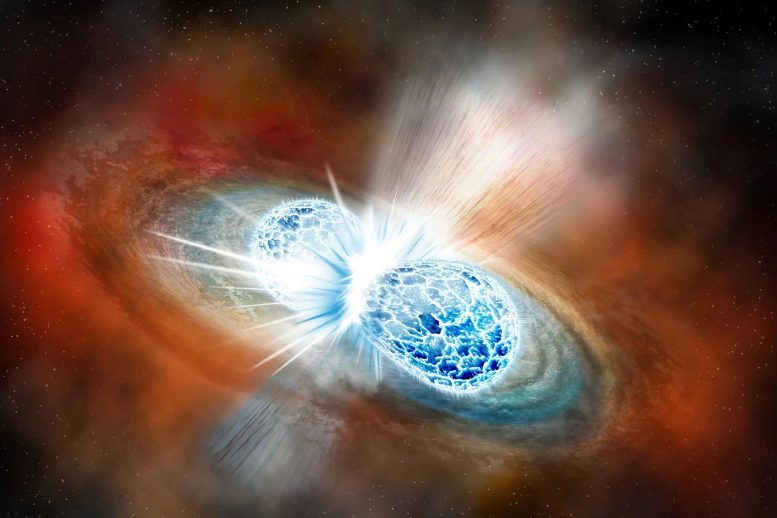
Artistic illustration of kilonova. Credit: Robin Dienel/Carnegie Institution for Science)
When neutron stars collide they produce an explosion that, contrary to what was believed until recently, is shaped like a perfect sphere. Although how this is possible is still a mystery, the discovery may provide a new key to fundamental physics and to measuring the age of the Universe. The discovery was made by astrophysicists from the University of Copenhagen and has just been published in the journal Nature.
Kilonovae — the giant explosions that occur when two neutron stars orbit each other and finally collide — are responsible for creating both great and small things in the universe, from black holes to the atoms in the gold ring on your finger and the iodine in our bodies. They give rise to the most extreme physical conditions in the Universe, and it is under these extreme conditions that the Universe creates the heaviest elements of the periodic table, such as gold, platinum, and uranium.
But there is still a great deal we do not know about this violent phenomenon. When a kilonova was detected at 140 million light-years away in 2017, it was the first time scientists could gather detailed data. Scientists around the world are still interpreting the data from this colossal explosion, including Albert Sneppen and Darach Watson from the University of Copenhagen, who made a surprising discovery.
“You have two super-compact stars that orbit each other 100 times a second before collapsing. Our intuition, and all previous models, say that the explosion cloud created by the collision must have a flattened and rather asymmetrical shape,” says Albert Sneppen, PhD student at the Niels Bohr Institute and first author of the study published in the journal Nature.
This is why he and his research colleagues are surprised to find that this is not the case at all for the kilonova from 2017. It is completely symmetrical and has a shape close to a perfect sphere.
“No one expected the explosion to look like this. It makes no sense that it is spherical, like a ball. But our calculations clearly show that it is. This probably means that the theories and simulations of kilonovae that we have been considering over the past 25 years lack important physics,” says Darach Watson, associate professor at the Niels Bohr Institute and second author on the study.
About Kilonovae
- Neutron stars are extremely compact stars that consist mainly of neutrons. They are typically only about 20 kilometers across, but can weigh one and a half to two times as much as the Sun. A teaspoon of neutron star matter would weigh about as much as Mount Everest.
- When two neutron stars collide, the phenomenon of a kilonova occurs. This is the name of the gigantic explosion that the merger creates. It is a radioactive fireball that expands at enormous speed and consists mostly of heavy elements formed in the merger and its aftermath — both the lighter and the very heavy elements — which are ejected into space.
- The phenomenon was predicted in 1974 and first clearly observed and identified in 2013. In 2017, detailed data from a kilonova was obtained for the first time, when the detectors LIGO (in the USA) and Virgo (in Europe) sensationally succeeded in measuring gravitational waves from the kilonova AT2017gfo, which was in a galaxy 140 million light years away.
The spherical shape is a mystery
But how the kilonova can be spherical is a real mystery. According to the researchers, there must be unexpected physics at play:
“The most likely way to make the explosion spherical is if a huge amount of energy blows out from the center of the explosion and smooths out a shape that would otherwise be asymmetrical. So the spherical shape tells us that there is probably a lot of energy in the core of the collision, which was unforeseen,” says Albert Sneppen.
When the neutron stars collide, they are united, briefly as a single hypermassive neutron star, which then collapses to a black hole. The researchers speculate whether it is in this collapse that a large part of the secret is hidden:
“Perhaps a kind of ‘magnetic bomb’ is created at the moment when the energy from the hypermassive neutron star’s enormous magnetic field is released when the star collapses into a black hole. The release of magnetic energy could cause the matter in the explosion to be distributed more spherically. In that case, the birth of the black hole may be very energetic,” says Darach Watson.
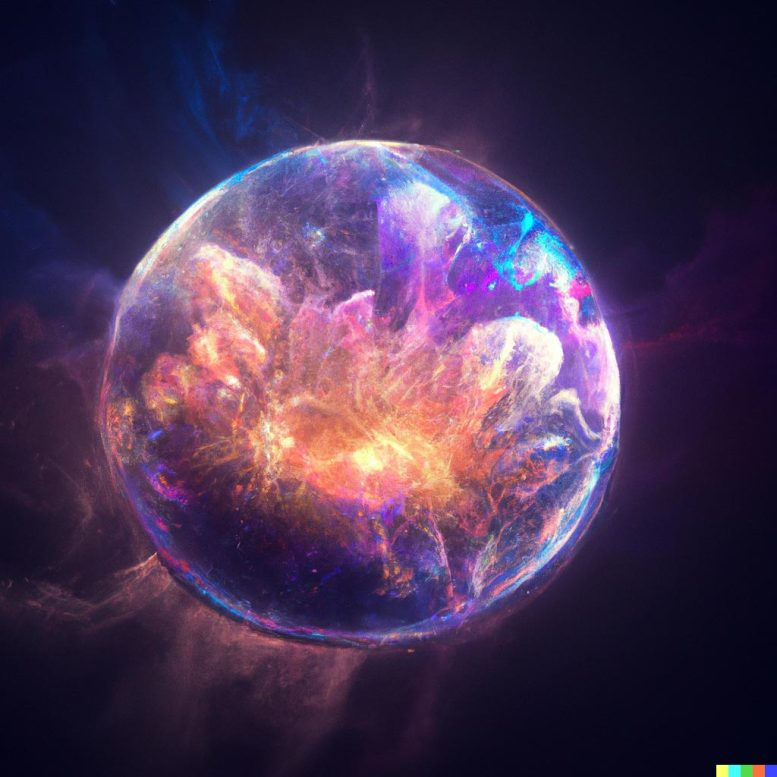
Illustration of spherical explosion. Credit: Albert Sneppen
However, this theory does not explain another aspect of the researchers’ discovery. According to the previous models, while all elements produced are heavier than iron, the extremely heavy elements, such as gold or uranium, should be created in different places in the kilonova than the lighter elements such as strontium or krypton, and they should be expelled in different directions. The researchers, on the other hand, detect only the lighter elements, and they are distributed evenly in space.
They therefore believe that the enigmatic elementary particles, neutrinos, about which much is still unknown, also play a key role in the phenomenon.
“An alternative idea is that in the milliseconds that the hypermassive neutron star lives, it emits very powerfully, possibly including a huge number of neutrinos. Neutrinos can cause neutrons to convert into protons and electrons, and thus create more lighter elements overall. This idea also has shortcomings, but we believe that neutrinos play an even more important role than we thought,” says Albert Sneppen.
A New Cosmic Ruler
The shape of the explosion is also interesting for an entirely different reason:
“Among astrophysicists there is a great deal of discussion about how fast the Universe is expanding. The speed tells us, among other things, how old the Universe is. And the two methods that exist to measure it disagree by about a billion years. Here we may have a third method that can complement and be tested against the other measurements,” says Albert Sneppen.
The so-called “cosmic distance ladder” is the method used today to measure how fast the Universe is growing. This is done simply by calculating the distance between different objects in the universe, which act as rungs on the ladder.
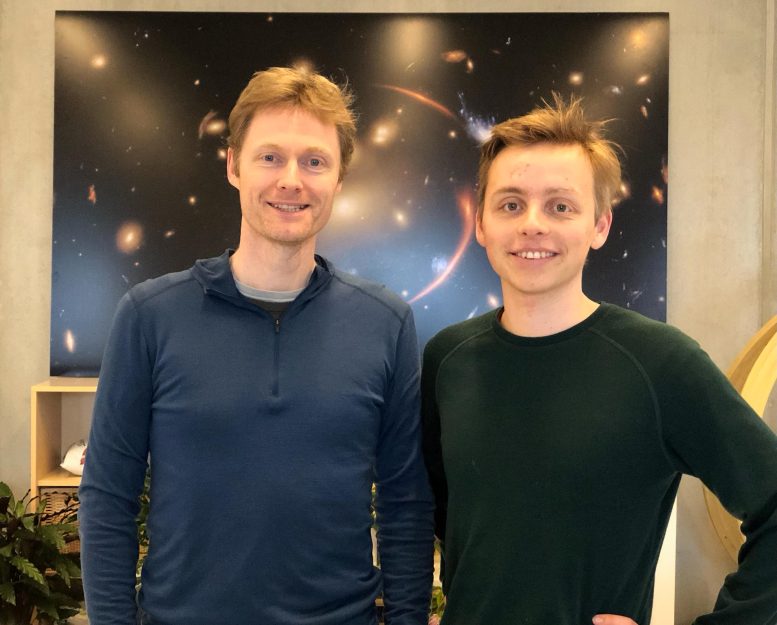
Darach Watson and Albert Sneppen. Credit: Darach Watson
“If they are bright and mostly spherical, and if we know how far away they are, we can use kilonovae as a new way to measure the distance independently – a new kind of cosmic ruler,” says Darach Watson and continues:
“Knowing what the shape is, is crucial here, because if you have an object that is not spherical, it emits differently, depending on your sight angle. A spherical explosion provide much greater precision in the measurement.”
He emphasizes that this requires data from more kilonovae. They expect that the LIGO observatories will detect many more kilonovae in the coming years.
Reference: “Spherical symmetry in the kilonova AT2017gfo/GW170817” by Albert Sneppen, Darach Watson, Andreas Bauswein, Oliver Just, Rubina Kotak, Ehud Nakar, Dovi Poznanski and Stuart Sim, 15 February 2023, Nature.
DOI: 10.1038/s41586-022-05616-x
The analyses have been carried out on data from the kilonova AT2017gfo from 2017. Those data are the ultraviolet, optical, and infrared light from the X-shooter spectrograph on the Very Large Telescope at the European Southern Observatory, combined with previous analyses of gravitational waves, radio waves, and data from the Hubble Space Telescope.
The study is an important early result of the HEAVYMETAL collaboration, which was recently awarded an ERC Synergy grant.
The following researchers contributed to the work: Albert Sneppen and Darach Watson from the Cosmic Dawn Center / Niels Bohr Institute, University of Copenhagen; Andreas Bauswein and Oliver Just, GSI Helmholtzzentrum für Schwerionenforschung, Germany; Rubina Kotak from the University of Turku, Finland; Ehud Nakar and Dovi Poznanski from Tel Aviv University, Israel; and Stuart Sim from Queen’s University Belfast, UK.


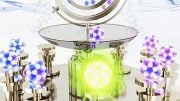
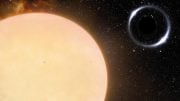

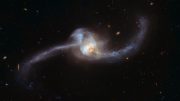


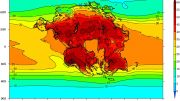
That model is wrong and so is Dark Energy and Dark Matter due to errors in Red Shift assumptions akin to Doppler that don’t apply to light (dim over distance explains it all as space isn’t as “empty” as we once assumed).
However, humans will continue to cling to the Standard Model and all its failings made evident by the Webb telescope showing clumpy and full size galaxies at “time” frames they’re not supposed to exist because letting go of the BBT is just too scary for some to contemplate.
A membrane based universe with occasional collisions with other membranes would explain everything including infrared background radiation with no need for magical “singularities” that form and explode for no apparent reason like some made up religion, but hey Star Trek TNG said Romulans use singularities in their engines so they MUST exist! (roll eyes)
I look forwards to reading your well-researched and peer reviewed paper, as soon as you provide a link.
All you need now are supporting arguments for your claims. You could start by explaining how dimming is connected to redshift, and go from there.
Changing your username and posting the same drivel doesn’t make it true. JWST has not shown mature galaxies at time frames they are not supposed to exist – what it discovered were galaxies that were more mature than expected, but they were not at the maturity we see our neighbouring galaxies. It’s like seeing toddlers instead of infants – but not adults.
So please stop lying to inflate your ego. You are not smarter than qualified scientists. In fact, you are not smart at all.
It is not impressive to erroneously and without evidence assert both that the standard cosmology is wrong and that it claims “singularities” and “explosions” from the early models that have been known to be wrong for a century now. The errors can be remedied by simply stop rolling eyes and let them lose on the nearest encyclopedia [*rolls eyes* :)], and the lack of evidence by doing some real work in cosmology.
WTF…They’re kids!
WOW!
“Artistic illustartions” of science make NO SENSE, because the artist isn’t a scientist. And isn’t explaining anything. If anything, the artist is making it more difficult to understand the science, by FORCING the student to decrypt the artist, who, putting it plainly, is just trying to cash a paycheck.
The illustration in this article was created by a scientist. In fact, it was created by the lead author of the article. Read the credits below the image.
Please stop using artists to explain science, artistically. Artists aren’t scientists, so must LISTEN to nscientists in order to paint. Paint WHAT? How is it helpful for MORONS to paint pictures?
If the Artists were not in the way the scientists would need to use WORDS. Ordinary communication. To convey their ideas. And then regular folks would not need ARTISTS to say what SCIENTISTS somehow cannot.
Get it?
No, I don’t get it. Science communication, whether withing scientific papers or amongst the public, has always relied on illustrations. It is efficient along the lines that “an image says more than a thousand words”.
Sure, it can be hard and error probe to interpret images, but so can text be. Having both ease the process on average.
Here is a graphic designer with a long experience in R&D in pharmaceutical companies as a MSc giving the rationale:
“Engaging visuals can represent and explain research that could otherwise be hard to grasp for scientific and non-scientific audiences alike.
Funding research is becoming increasingly challenging and grant proposals benefit greatly from graphical abstracts to enhance their success rate. Graphics and charts are also a great way to communicate information and data quickly and clearly.
Visual communication can significantly widen the impact of research and attract social media attention.”
Same as science is useful for society, visual communication is useful för science.
Perhaps more interesting that the sphericity of the explosion is that it gives a near universe Hubble constant that aligns with the distant universe Planck result and not the supernove near universe. It is still a large range since the single system observation is dominated by the uncertainty in peculair velocity, but at 1 sigma there is no overlap.
“The Hubble constant determined from our kilonova EPM is H_0 = 65.6 ± 3.4 km s^−1 Mpc^−1 from the combined constraint of the first two epochs.”
Planck 2018 has H_0 = 67.36 ± 0.54 km s^−1 Mpc^−1 and Hubble+SH0ES has H_0 = 73.03 ± 1.04 km s^−1 Mpc−1.
So, these two kids; ten and eight years old, will be nominated for a Noble Prize? That’s great!